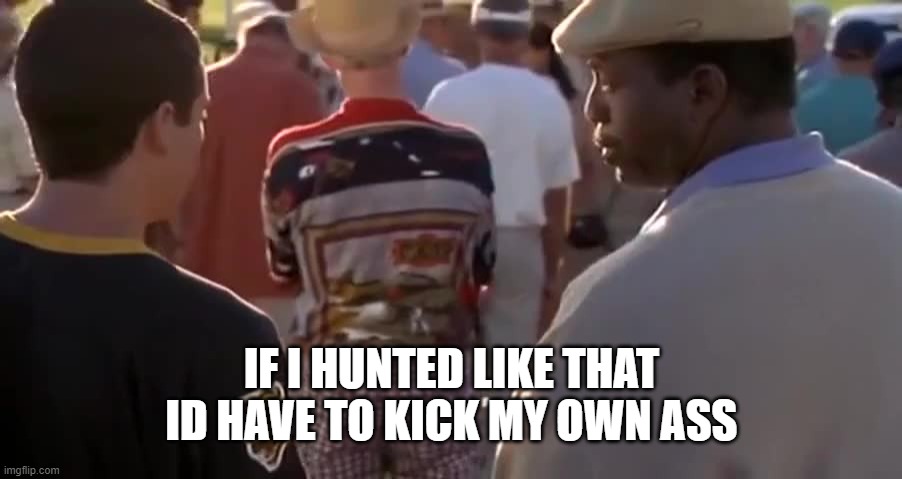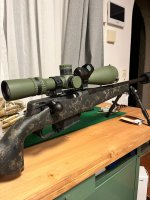The bolt strip (seperating the bolt head from the rest) is a joke, toolless and done in seconds.
Strasser comes from Austria, not Germany.
For the "little featherhats" (OT):
Well, there is a lot of tradition in the "German" (Austria and Switzerland as well) hunt.
I´m anything but a traditionalist, coming from the sport shooting scene, having done IPSC and other dynamic shooting sports, I knew even before I went into hunting, that I never will be a "Loden-Jockel".
BUT, to get a hunting permission in Germany is not an easy thing (wo would have guessed), especially in the southern states (Baden-Württemberg and Bayern).
I f.e. had hunting education twice a week in the evening and almost every saturday for 10 months.
Wildlife biology (all wild fur and feather animals), hunting practice (wildlife cherish, loss prevention, traps, hunting ground running etc.), weaponry (knowledge, handling, laws, hot and cold weapons, optics, ballistics, shoot training), dogs (races, treatment, education, leading and searching), wildlife diseases, hunting laws.
You must have (here in Baden-Württemberg), at least 130 hours of education, in theory and practice, to get the permission for the exame.
Your leading instructor has to proof your ability for the exame to get there.
The exame has three parts, shooting exame, in written form and oral / practice (the last one being the hardest one).
And yes, there is a lot of knowledge and tradition, which formed over centuries.
The "polo/dressage set" honours their hunted animals, giving them their "last bite" and thanking them for their meat.
And it´s the hunter´s honour and duty to kill the animal as fast and as painless (humane if you want so) as possible, or, not to pull the trigger if he isn´t sure he can do so (letting the finger straight).
Long story short:
You start with combat boots, jeans, a colourful shirt and a basecap with "pro hunter" on it (the last one to make a joke in the beginning, which you will have regrets for for a loooong time).
It doesn´t matter how guns weapons look, as long as they are black and there is no wood on them.
Then the education begins and something happens, slowly but steadily, and you go to the exame as another person.
This education does something with you, it changes you and your thinking, the way you look at the world, at humans and at nature.
I don´t want to get too pathetic, but it definetely changed me.
I´ve read a report about an US Army vet, who has lost his path in life after several tours overseas.
He was then stationed in Germany and because he was struggling and searching for something he could get a hold onto, he decided to go "back" to hunting, what he did since he was a kid back home.
A German hunter then told him to make the hunting education and become a "German" hunter, what he did.
(As a German native speaker who had to bite hard to manage that, just this gets my highest respect.)
It widened hies view and he found something, which he could apply to and which changed his way of just seeing life and the world.
Respect for nature, respect for life and respect for other humans.
His name is Al Louangketh and he is a world wide hunting guide now, what I know, still living the spirit of the German hunt.
It gave a new sense to his life.
Nach einer Verwundung im Irak stand für ihn mehr auf dem Spiel als „nur“ seine Gesundheit. Wie der Jagdschein Al Louangketh half.

www.pirsch.de
But what about me?
Well, I as a longterm sport shooter was making jokes about the Loden-Jockel in the past.
I was full of prejudices, judged them by their look as well, and got schooled in so many ways, I couldn´t have imagined.
My outfit slightly changed while I got the education, it became less colourful, green and brown was more and more coming.
Camo in the beginning, basecaps for sure.
But my wife surprised me to my one-year-anniversary as a "young hunter" with a hat from Loden.
Slowly I begin to take the hat more than the cap when I go to the woods, seeing some real pros over the cap for hunting.
Sometimes things which matured over centuries are not that dumb as we modern people think.
But to come finally to the end, there is a German saying:
"When I was 17, my dad was an old stubborn idiot which knew nothing about life or how the world runs.
When I was 37, I had to admit, that he was not always wrong.
When I was 57, my father died, and I must say, that he finally became a well-knowing, well-aware and reasonable guy."
What do you think, who the stubborn idiot was?
Sorry for the OT.













